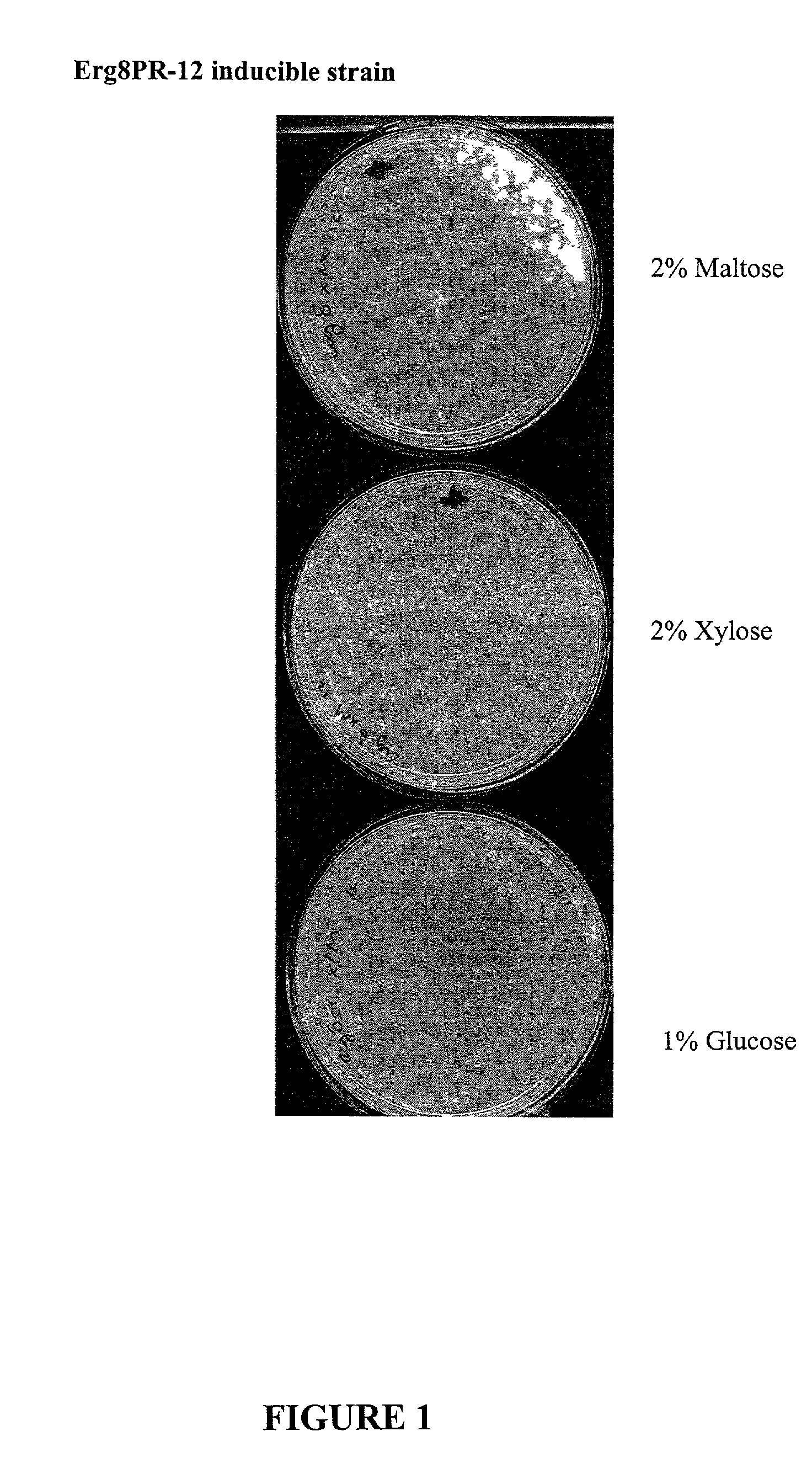Identification of essential genes of Aspergillus fumigatus and methods of use
a technology of aspergillus fumigatus and essential genes, which is applied in the field of identification of essential genes of aspergillus fumigatus and methods of use, can solve the problems of low efficacy of aspergillus fumigatus in vivo, high mortality from ia, and severe and usually fatal invasive infections in immunocompromised hosts
- Summary
- Abstract
- Description
- Claims
- Application Information
AI Technical Summary
Benefits of technology
Problems solved by technology
Method used
Image
Examples
Embodiment Construction
5.1 Identification of Aspergillus fumigatus Essential Genes
5.11 DNA Sequence Analysis of the Aspergillus fumigatus Genome
[0022] The nucleotide sequences of Aspergillus fumigatus genomic DNA was obtained by a whole-genome random shotgun DNA sequencing effort. The genomic DNA was prepared from an isolate of Aspergillus fumigatus CEA 10 which was isolated from the infected lung tissue of a human aspergillosis patient. The genomic DNA was sheared mechanically into fragments, enzymatically treated to generate blunt ends, and cloned into E. coli pUC19- and pBR322-based plasmids to form genomic DNA libraries. Average insert sizes of the pUC19-based genomic DNA library clones were about 2 kb and the plasmids were present in high copy numbers in E. coli cells. The other two genomic DNA libraries of pBR322-based clones contain inserts of about 10 kb and about 50 kb respectively. The colonies of genomic clones were transferred robotically to 384-well titre plates; and plasmid DNA templates for...
PUM
| Property | Measurement | Unit |
|---|---|---|
| Fraction | aaaaa | aaaaa |
| Angle | aaaaa | aaaaa |
| Length | aaaaa | aaaaa |
Abstract
Description
Claims
Application Information
 Login to View More
Login to View More - R&D
- Intellectual Property
- Life Sciences
- Materials
- Tech Scout
- Unparalleled Data Quality
- Higher Quality Content
- 60% Fewer Hallucinations
Browse by: Latest US Patents, China's latest patents, Technical Efficacy Thesaurus, Application Domain, Technology Topic, Popular Technical Reports.
© 2025 PatSnap. All rights reserved.Legal|Privacy policy|Modern Slavery Act Transparency Statement|Sitemap|About US| Contact US: help@patsnap.com

